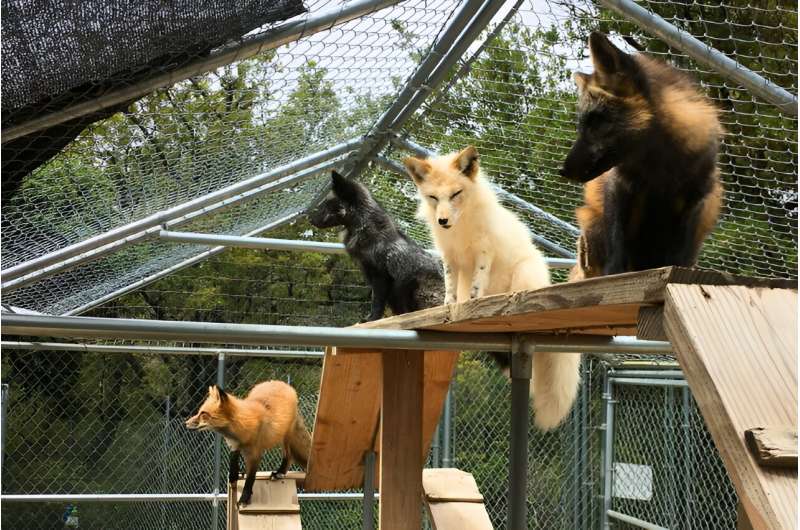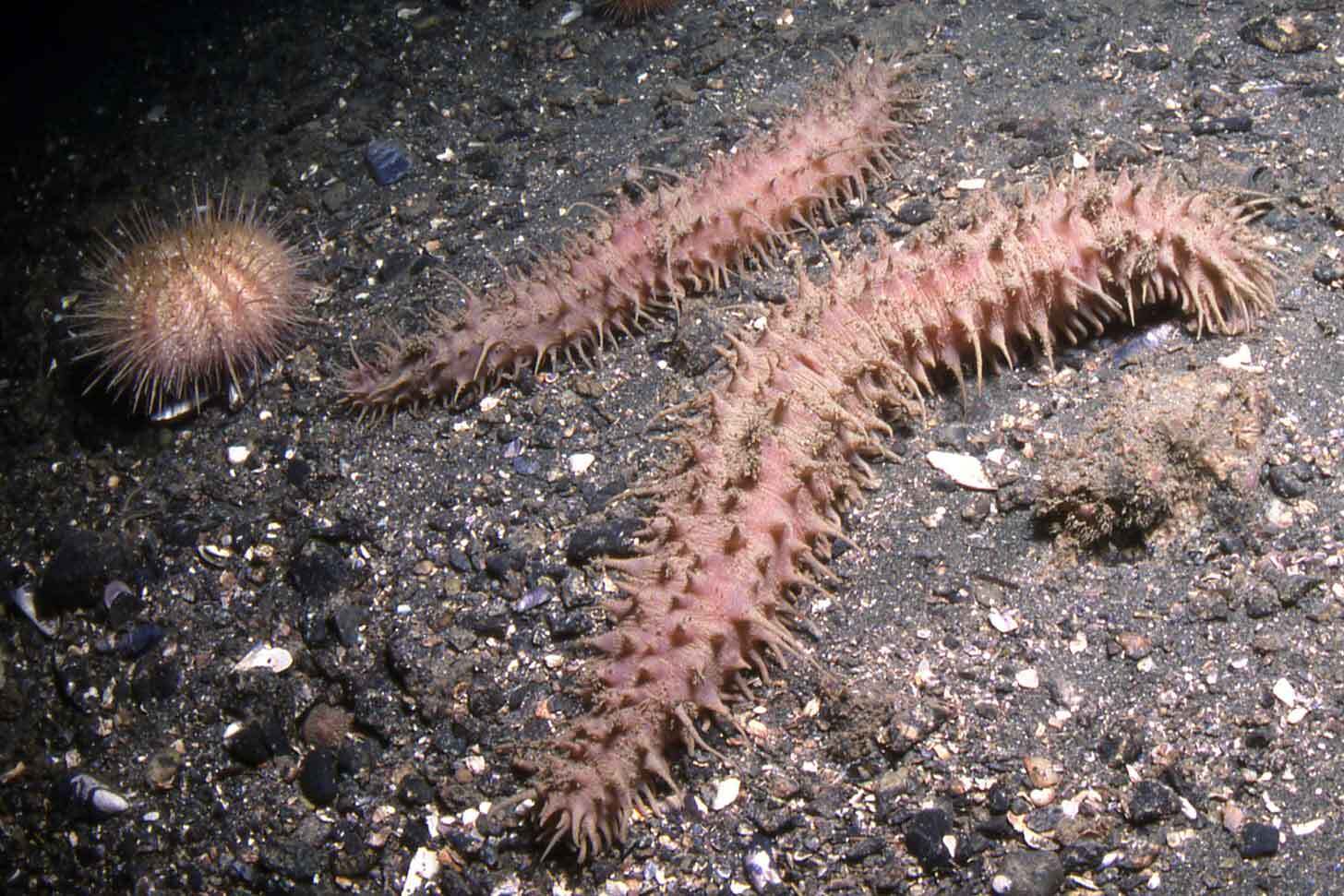
Credit: Anna Kukekova, University of Illinois Urbana-Champaign
Pets play an important role in our society, with two-thirds of American households enjoying the companionship of pets and many others relying on animal products for their nutritional needs. But the taming process remains a bit of a mystery. Convincing wild animals that they are safe enough to coexist and mate in enclosures and in close proximity to humans and other animals is no small feat. What does it take behaviorally and genetically for this to happen?
For the most part, the animals we’ve domesticated have been tame for so long that there’s no easy way to go back and study the transition from wild to domesticated. A notable exception is the domestication of red foxes – raised in captivity for their fur – beginning in 1896 on Canada’s Prince Edward Island. A team from the University of Illinois Urbana-Champaign has traced the process from its beginnings on the island to captive fox populations around the world, including some still in operation today.
The work was published in Journal of Heredity.
“We have historical documents, we have genetic information on wild fox populations around the world, and we’ve taken samples from domesticated foxes in North America and Eurasia. So we can really dig into the question of how foxes were domesticated and how their genetics were shaped by geography and time,” said lead study author Halie Rando, an assistant professor at Smith College who completed her doctoral studies at the Illinois Institute of Informatics, now in the School of Information Sciences, at Illinois .
Rando, along with Illinois professor of animal sciences Anna Kukekova and their collaborators, analyzed new and previously published mitochondrial DNA data from wild fox populations and from 10 captive populations in the Americas. North and Eurasia, including the site of the famous Russian fox domestication experiment. They then combined historical data about intercontinental fox trade, changing fur demand and farm sizes, and breeding practices. Together, the data allowed them to determine the geographic origins of farmed foxes around the world and understand the role of genetic diversity in the domestication process.
“When we do population genetic research, we’re able to uncover history legally,” Rando said. “By looking at the signatures that are in current populations, we can make inferences about the past.”
Early fox farmers were motivated by the demand for the silver variant of red foxes. Trying to capture rare silver foxes from the wild was incredible and difficult, but raising them in captivity had its own challenges.
“Foxes were very difficult to breed on farms because they would get really stressed and die or kill their offspring. It took a long time to figure out how to set up breeding environments to reduce stress . Along the way, they were selecting for individuals that were better suited to the farm environment,” Rando said. “They also managed to select for silver fur color. Even without knowing any genetics, they figured out how to crack the code.”
After that, the industry flourished, with Canadian foxes being exported all over the world. Genetic analysis showed that every captive population they researched — even those in Eurasia — was descended from wild North American foxes. In fact, there were no traces of genetic markers from wild Eurasian fox populations, suggesting that any attempts to domesticate local populations were abandoned or overtaken by North American genetics.
“This study helps answer questions researchers have been asking for years about the geographic origin and genetic background of these fox populations,” said Kukekova. “Furthermore, some farmed foxes may have mixed with native foxes through release events over the years in different locations. Occasionally, unexpected gene signatures appear in native populations, so our study may help to explained where they come from.”
World War II disrupted demand and the industry never recovered in North America. However, in the USSR, fox farms quickly recovered, aided by the government-supported fur industry.
Overall, the genetic pattern reflects the most consistent breeding history in Eurasia. Although all farmed foxes in the study were found to be descended from wild North American foxes, populations in Eurasia were more genetically diverse, with greater representation of Alaskan and western US genotypes. except for the common genotypes from Eastern Canada.
“Some gene signatures were very rare and only found in a few Eurasian farm populations,” Rando said. “The presence of these rare signatures, along with more diversity overall in Europe, may be due to more stable population sizes there after World War II, while those rare species may have been lost when farms North America collapsed.”
The study also sheds light on the famous Russian Farm Fox experiment, started in 1959 at the Institute of Cytology and Genetics (ICG) in Novosibirsk. The study began by selecting farm-raised foxes that showed the least avoidant behavior around humans. Through successive generations, scientists selectively bred foxes with tame behaviors, eventually resulting in foxes as friendly as the family dog.
The current study sampled that population and analyzed it along with others, finding no unique genetic origins for Russian foxes. To Rando, this suggests that farm-raised foxes may have the same basic capacity to develop friendly behavior.
“I would say that we demonstrated quite conclusively that the foxes in Novosibirsk are not meaningfully different from other farm-raised foxes in terms of their genetic origins. We also found that the populations in Novosibirsk were among the most genetically diverse populations in captivity, likely due to their meticulous pedigree records and carefully planned breeding,” she said.
Kukekova added, “It is informative to know that this successful effort on Prince Edward Island really had a major effect on modern populations that continues to this day. The model can help us study domestication more broadly and find the gene networks that lead to tamed behavior, which is something people have been interested in for a very long time.”
More information:
Halie M Rando et al, The missing history of a modern home: Historical demography and genetic diversity in farmed red fox populations, Journal of Heredity (2024). DOI: 10.1093/jhered/esae022
Provided by the College of Agricultural, Consumer and Environmental Sciences at the University of Illinois Urbana-Champaign
citation: Genetic patterns of world’s farmed, domesticated foxes revealed through historic deep dive (2024, July 1) Retrieved July 2, 2024 from https://phys.org/news/2024-07-genetic-patterns -world-farmed-domesticated. html
This document is subject to copyright. Except for any fair agreement for study or private research purposes, no part may be reproduced without written permission. The content is provided for informational purposes only.
#Genetic #patterns #worlds #farmed #domesticated #foxes #revealed #historical #deep #dive
Image Source : phys.org





